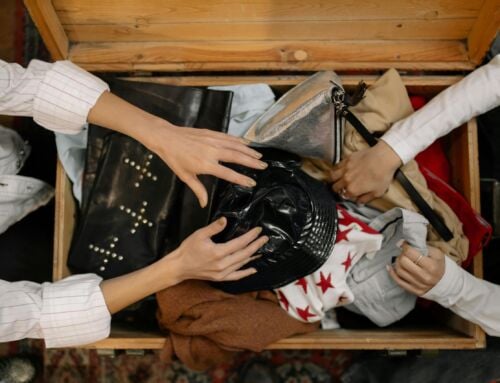« I created this fragrance to dress every woman in a trail of desire, and see all my dresses emerge from its bottle. »Christrian Dior
In 1947, Christian Dior created Miss Dior, an ode to love, inspired by the gardens of his childhood home in Normandy. The fragrance was closely linked to the clothing collection he launched that spring-summer. A true innovation for its time, the fragrance's elegant, modern and refined notes marked a turning point in the brand's history. Today, fragrance, fashion and luxury all share a common universe. Perfumes, some with world-famous notes, give a real identity to fashion and luxury brands.
The ultimate outfit enhancer.
Like Chanel N°5 or Dior's J'adore, each fragrance from a major luxury house underlines a clothing line with a well-defined identity. For these great names in fashion, fragrance is a gateway to the brand's universe.
In fact, to soak up the fragrances of a haute couture brand, there's no need to go uptown. Just walk through the door of any perfumery to discover a brand's most bewitching fragrances.
Much more accessible than any luxury item, perfume allows the image that a fashion and luxury house wishes to convey to be widely disseminated. So, very often, within a house, all the spotlight is on the perfume, erected as the emblem of the brand.
In the 1950s, Christian Dior was one of the first couturiers to understand the vital link between perfume and fashion. For him, perfume was the finishing touch to a dress. Today, this link is more visible than ever in the brand's advertising campaigns. A case in point is the advertising film for Miss Dior perfume, in which Nathalie Portman reveals the key outfits from the brand's latest collections.
Perfume, fashion and luxury: an increasingly close relationship.
In recent years, the major fashion and luxury houses have decided to strengthen the links between fashion, luxury and fragrance.
Indeed, before developing a fragrance and preparing for its release, a well-honed strategy is put in place. Like Chanel, which in July 2017 released a fragrance in tribute to the brand's creator, soberly named «Gabrielle». According to the Maison's executives, the perfume, which had already been in the making for years, was due for release sooner. However, the leather goods workshops produced a bag also inspired by the famous couturier, named «Gabrielle». The two products were released simultaneously.
This well-executed strategy has given the brand a strong market position. Two ways of expressing the same vision.
Other fashion and luxury leaders have also grasped the major impact that such a strategy could have on the fashion and luxury industry. Yves Saint Laurent, for example, relies on similar designs for its cosmetics, bags and perfume ranges.
Perfumes put to the test of innovation.
Because of the story it tells and its close link with the brand's founder, fragrance is a part of time. It spans the ages, preserving the heritage of a great house.
However, fashion and luxury are constantly renewing themselves. So the challenge for the major fashion and luxury brands is to make their fragrances last. For market leaders, heritage and tradition are a commitment. Chanel, for example, wants to get a very specific message across through its advertising campaigns for its best-known fragrances: in this age of disposable consumer goods, and the profusion of new trends at breakneck speed, perfume holds the course. It's a pledge of authenticity and durability, making perfume the true heritage of a fashion house.
If you dream of working in the buoyant perfumery sector, ISAL Paris offers you a MBA Fashion Luxury Marketing & Innovation, This is the perfect way to learn about the world of luxury, and to join some of the world's leading luxury brands.




